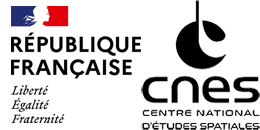The COMET-ORB invites you to a seminar on Navigating Complex Orbits: Advanced Concepts for Moon and Small Body Exploration that will take place on May 27, 2025, from 14:00 to 16:20, at ISAE-Supaero in Toulouse.
You can follow the presentation in-person at Supaero (Amphi 3), or remotely using LiveStorm.
If you plan to attend in-person, you must register at the following link: https://evenium.events/x75cct9t/.
If you plan on attending the presentation remotely, or if you want access to it later, please register at this link: https://app.livestorm.co/p/060f99e9-4894-4d1e-9e9c-70eb230b0721/live?s=d3f72448-df6b-4f32-a581-2d6199e03203
PROGRAM
This COMET-ORB workshop will bring together innovative contributions on complex orbital dynamics and robotic exploration of small bodies and planetary moons.
Topics include transitions between periodic and quasi-periodic orbits in the zonal Hill problem, robotic strategies for asteroid proximity operations, and multi-objective approaches for trajectory design to Saturn's moons.
Emphasis is placed on trajectory concepts suited to low-gravity environments with high scientific value.
The workshop aims to bridge analytical, numerical, and technological perspectives to foster new pathways in mission planning and design.
14:00 – 14:10: Welcome & Introduction
14:10 – 14:40: Nicola Baresi: From Periodic to Quasi-periodic orbits – trajectory design in the Zonal Hill problem
14:40 – 15:10: Jay McMahon: Area-of-Effect Softbots for Asteroid Proximity and Surface Operations
15:10 – 15:30: Coffee break
15:30 – 16:10: Joan Pau Sanchez Cuartielles & Spencer Boone: Science-Driven Trajectory Design for Saturn's Moons – Automated Saturn Moon Tour Design for Ocean Worlds Exploration
16:10 – 16:20: Conclusion
ABSTRACTS
From Periodic to Quasi-periodic orbits – trajectory design in the Zonal Hill problem
Nicola Baresi, Senior Lecturer, University of Surrey
Area-of-Effect Softbots for Asteroid Proximity and Surface Operations
Jay W. McMahon, Associate Professor, University of Colorado at Boulder
Area-of-Effect Softbots, or AoES, are a new type of soft-robotic spacecraft designed especially to operate in close proximity to and on the surface of small asteroids. AoES use their large, flexible surface area to enable orbital control from deployment to landing, and subsequent anchoring and mobility on the asteroid's surface. Although originally designed for regolith acquisition, AoES can enable a variety of surface operations for science, infrastructure or ISRU goals. The talk will conclude with a discussion of how the AoES design has been adapted to be used for satellite servicing and debris removal in Earth orbit as well.
Automated Saturn Moon Tour Design for Ocean Worlds Exploration
Joan Pau Sanchez Cuartielles, Professor, ISAE-SUPAERO
Spencer Boone, Post-doctoral researcher, ISAE-SUPAERO
ESA is committed to explore the ocean worlds of giant planets, as to address fundamental questions on their ability to harbor life. In Saturn, Titan, Enceladus and, more recently, Mimas, have all shown evidences of subsurface liquid oceans. In order to progress sufficiently on the understanding of the habitability of ocean worlds, it is necessary to send a probe to explore in-situ and, possibly to perform sample acquisition. Exploration of the solar system relies enormously on gravity assist to reach anywhere. However, while a typical interplanetary transfer will contain 3-6 planetary gravity assist, a moon tour in Saturn may easily contain 50-60 moon fly-bys. As a consequence, exploring the search space becomes an extremely complex mixed-integer optimization problem. This presentation will provide an overview on the complexity of these problems. An effective approach to explore such a complex search space leverages simplified dynamics (linked-conics) with dynamic programming. Two different problems will be discussed: the moon tour where the goal is to reach a quasi-ballistic capture to a desired moon and the pseudo-orbit approach, which enables the exploration of a moon without being gravitationally bound to it (only by designing appropriate sequences of fly-bys).
To take part in this event, you must register.





